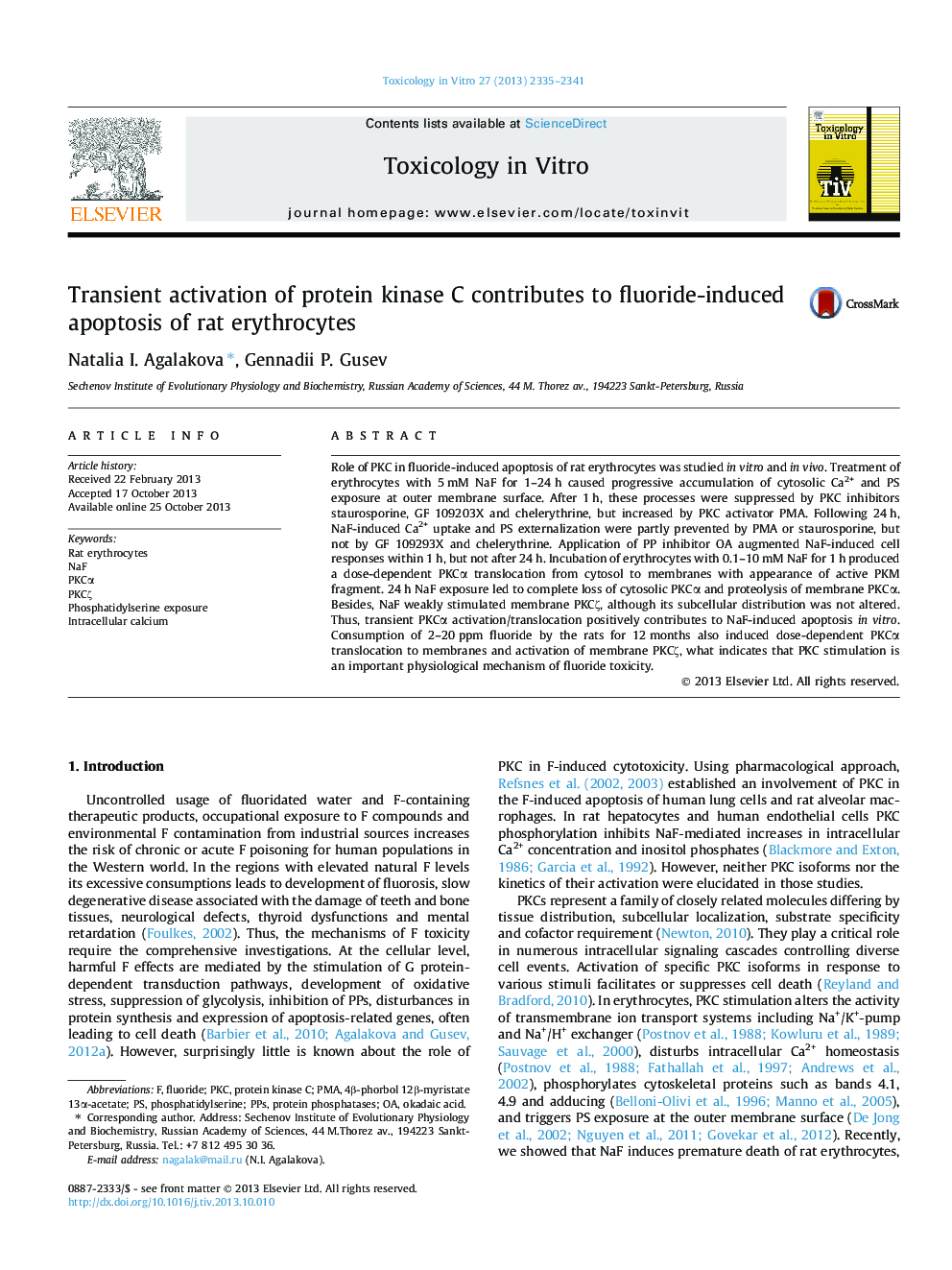| Article ID | Journal | Published Year | Pages | File Type |
|---|---|---|---|---|
| 2602528 | Toxicology in Vitro | 2013 | 7 Pages |
•Role of PKC in F-induced apoptosis of rat erythrocytes was studied.•PKCα and PKCζ isoforms were identified in the rat erythrocytes.•Ca2+ intake and PS exposure were monitored in vitro.•Transient PKCα stimulation is involved in F-induced apoptosis of rat erythrocytes.•Long-term F intoxication leads to PKCα translocation and proteolytic cleavage.
Role of PKC in fluoride-induced apoptosis of rat erythrocytes was studied in vitro and in vivo. Treatment of erythrocytes with 5 mM NaF for 1–24 h caused progressive accumulation of cytosolic Ca2+ and PS exposure at outer membrane surface. After 1 h, these processes were suppressed by PKC inhibitors staurosporine, GF 109203X and chelerythrine, but increased by PKC activator PMA. Following 24 h, NaF-induced Ca2+ uptake and PS externalization were partly prevented by PMA or staurosporine, but not by GF 109293X and chelerythrine. Application of PP inhibitor OA augmented NaF-induced cell responses within 1 h, but not after 24 h. Incubation of erythrocytes with 0.1–10 mM NaF for 1 h produced a dose-dependent PKCα translocation from cytosol to membranes with appearance of active PKM fragment. 24 h NaF exposure led to complete loss of cytosolic PKCα and proteolysis of membrane PKCα. Besides, NaF weakly stimulated membrane PKCζ, although its subcellular distribution was not altered. Thus, transient PKCα activation/translocation positively contributes to NaF-induced apoptosis in vitro. Consumption of 2–20 ppm fluoride by the rats for 12 months also induced dose-dependent PKCα translocation to membranes and activation of membrane PKCζ, what indicates that PKC stimulation is an important physiological mechanism of fluoride toxicity.
Graphical abstractFigure optionsDownload full-size imageDownload as PowerPoint slide
